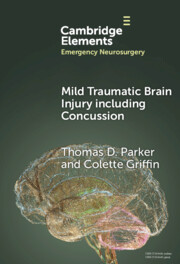1866 results

Oliver Goldsmith in Context
- Coming soon
-
- Expected online publication date:
- August 2024
- Print publication:
- 31 August 2024
-
- Book
- Export citation
Political Obligation and Self-Sufficiency in Leonardo Bruni's History of the Florentine People
-
- Journal:
- Austrian History Yearbook , First View
- Published online by Cambridge University Press:
- 16 April 2024, pp. 1-13
-
- Article
-
- You have access
- Open access
- HTML
- Export citation
Occurrence and distribution of the entomopathogenic nematodes Steinernema spp. and Heterorhabditis indica in Indonesia
-
- Journal:
- Journal of Helminthology / Volume 74 / Issue 2 / June 2000
- Published online by Cambridge University Press:
- 12 April 2024, pp. 143-150
-
- Article
- Export citation
Chapter 13 - Extending Extension’s Outreach and Engagement with Social Media
- from Part III - Looking Ahead: Emerging Issues and Trends
-
-
- Book:
- Extension Education and the Social Sciences
- Published online:
- 28 March 2024
- Print publication:
- 04 April 2024, pp 267-285
-
- Chapter
- Export citation
280 Enhancing Nephrology Care Access: Development and Implementation of a Telenephrology Dashboard Through Human-Centered Design
- Part of
-
- Journal:
- Journal of Clinical and Translational Science / Volume 8 / Issue s1 / April 2024
- Published online by Cambridge University Press:
- 03 April 2024, p. 85
-
- Article
-
- You have access
- Open access
- Export citation
526 Administrative Simplification of Committee Reviews through REDCap
- Part of
-
- Journal:
- Journal of Clinical and Translational Science / Volume 8 / Issue s1 / April 2024
- Published online by Cambridge University Press:
- 03 April 2024, p. 156
-
- Article
-
- You have access
- Open access
- Export citation
14 - Papua New Guinea
-
-
- Book:
- Australia in World Affairs 1971–1975
- Published online:
- 29 March 2024, pp 347-383
-
- Chapter
- Export citation
Understanding precipitation changes through unsupervised machine learning
-
- Journal:
- Environmental Data Science / Volume 3 / 2024
- Published online by Cambridge University Press:
- 12 February 2024, e3
-
- Article
-
- You have access
- Open access
- HTML
- Export citation
Δ–Springer varieties and Hall–Littlewood polynomials
- Part of
-
- Journal:
- Forum of Mathematics, Sigma / Volume 12 / 2024
- Published online by Cambridge University Press:
- 31 January 2024, e19
-
- Article
-
- You have access
- Open access
- HTML
- Export citation
Saturated fat and CVD: importance of inter-individual variation in the response of serum low-density lipoprotein cholesterol
-
- Journal:
- Proceedings of the Nutrition Society , First View
- Published online by Cambridge University Press:
- 29 January 2024, pp. 1-11
-
- Article
-
- You have access
- Open access
- HTML
- Export citation
Preoperative dietitian-led Very Low Calorie Diet (VLCD) Clinic for adults living with obesity undergoing gynaecology, laparoscopic cholecystectomy and hernia repair procedures: a pilot parallel randomised controlled trial
-
- Journal:
- British Journal of Nutrition / Volume 131 / Issue 8 / 28 April 2024
- Published online by Cambridge University Press:
- 15 January 2024, pp. 1436-1446
- Print publication:
- 28 April 2024
-
- Article
-
- You have access
- Open access
- HTML
- Export citation
Diagnostic testing and antibiotic utilization among inpatients evaluated for coronavirus disease 2019 (COVID-19) pneumonia
-
- Journal:
- Infection Control & Hospital Epidemiology / Volume 45 / Issue 5 / May 2024
- Published online by Cambridge University Press:
- 28 December 2023, pp. 667-669
- Print publication:
- May 2024
-
- Article
- Export citation
Validation of a brief screener for broad-spectrum mental and substance-use disorders in South Africa
-
- Journal:
- Cambridge Prisms: Global Mental Health / Volume 11 / 2024
- Published online by Cambridge University Press:
- 21 December 2023, e4
-
- Article
-
- You have access
- Open access
- HTML
- Export citation
70 Uncovering Comorbid Neuropsychological Disorders in Children with Unilateral Hearing Loss Under Consideration for Cochlear Implantation
-
- Journal:
- Journal of the International Neuropsychological Society / Volume 29 / Issue s1 / November 2023
- Published online by Cambridge University Press:
- 21 December 2023, pp. 745-746
-
- Article
-
- You have access
- Export citation
47 Premorbid Intellectual Functioning and Not Education Predicts Memory Performance Virtual Environment Grocery Store
-
- Journal:
- Journal of the International Neuropsychological Society / Volume 29 / Issue s1 / November 2023
- Published online by Cambridge University Press:
- 21 December 2023, pp. 726-727
-
- Article
-
- You have access
- Export citation
13 Relationship Between Subjective Cognitive Decline and Episodic Memory Among Older Adults with and Without Neurocognitive Impairment
-
- Journal:
- Journal of the International Neuropsychological Society / Volume 29 / Issue s1 / November 2023
- Published online by Cambridge University Press:
- 21 December 2023, p. 697
-
- Article
-
- You have access
- Export citation

Mild Traumatic Brain Injury including Concussion
-
- Published online:
- 14 December 2023
- Print publication:
- 18 January 2024
-
- Element
- Export citation
OP88 Translating Patient Reported Measure Score Into Specific Outcomes From The Patient Perspective–Example Using Health Assessment Questionnaire-Disability Index
-
- Journal:
- International Journal of Technology Assessment in Health Care / Volume 39 / Issue S1 / December 2023
- Published online by Cambridge University Press:
- 14 December 2023, p. S24
-
- Article
-
- You have access
- Export citation
“You’re Not Understood, and You’re Isolated”: A Narrative Account of Loneliness by Black Older Adults in Ontario, Canada
-
- Journal:
- Canadian Journal on Aging / La Revue canadienne du vieillissement , First View
- Published online by Cambridge University Press:
- 13 December 2023, pp. 1-14
-
- Article
-
- You have access
- Open access
- HTML
- Export citation
Patterns of mental health service use among perpetrators of domestic homicide: descriptive study of Domestic Homicide Reviews in England and Wales
-
- Journal:
- BJPsych Bulletin , FirstView
- Published online by Cambridge University Press:
- 11 December 2023, pp. 1-9
-
- Article
-
- You have access
- Open access
- HTML
- Export citation








